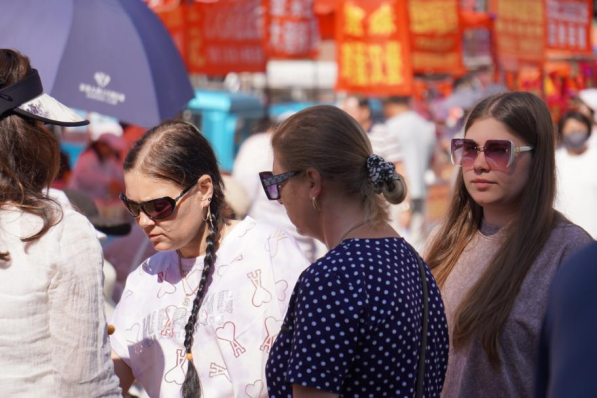Greater Bay Area drives tech development


High tech innovation
Kwok's story provides a cameo of the central government's plan to help the Bay Area become the world's most important city cluster and a rival to California's Silicon Valley.
The plan envisions the Bay Area attaining its major development goals by 2035, but even before then, it is expected to match Silicon Valley's level of creativity and productivity in high-technology and innovation.
The Bay Area sprawls across 56,000 square kilometers. The cluster embraces nine cities in Guangdong: Guangzhou; Shenzhen; Zhuhai; Foshan; Huizhou; Zhaoqing; Dongguan; Jiangmen; and Zhongshan, along with the Hong Kong and Macao special administrative regions.
The blueprint for the Bay Area, released on Feb 18, shone the spotlight on regional integration that will bring new economic impetus and create opportunities for millions of people in one of China's most vibrant and open business regions.
Its immense potential has been the focus of discussions between legislators and political advisers at the ongoing two sessions - the annual meetings of the 13th National People's Congress, the top legislative body, and the 13th National Committee of the Chinese People's Political Consultative Conference, the top political advisory body.
NPC deputies and CPPCC National Committee members said they drew inspiration from the central government's blueprint for the Bay Area.
Pauline Ngan Po-ling, managing director of Mainland Headwear Holdings in Hong Kong and an NPC deputy, said that having read all 50 pages of the outline, she saw golden opportunities.
Her company is Guangdong's largest manufacturer of headwear, and she plans to convert a factory, which covers 67 square kilometers, into an incubation base for startups from Hong Kong and Macao.
She said she was inspired by the blueprint, which encourages the establishment of incubation facilities for tech startups from Hong Kong and Macao in the nine Guangdong cities.
The document also promotes assistance for higher education establishments and research and development institutes in Hong Kong and Macao to apply and commercialize advanced technological achievements.
Ngan will site the incubator in Shenzhen's Buji district, where her factory once employed 5,000 people.
In 2013, rising costs brought the company to the brink of bankruptcy, so Ngan decided to move the labor-intensive manufacturing process to Bangladesh, taking advantage of policy support offered by the central government under the Belt and Road Initiative. It proved to be a shrewd decision.
Now, about 1,000 workers remain in the Shenzhen factory. The 60-year-old businesswoman said that in three to five years, the area's development will accelerate and young people will be the main drivers of the changes.
Excellent scientific research capabilities underpin the Bay Area's pursuit of an innovation-driven growth model, and policy support has been increased to encourage cross-border collaboration.
In May last year, national-level funding was made available to scientists in Hong Kong and Macao. The central government has indicated further measures, such as opening up key research projects and research equipment for scientists from the two SARs.
It will also allow biosamples to be shipped across the border for research purposes.
Neuroscientist Nancy Ip Yuk-yu, who leads the State Key Laboratory of Molecular Neuroscience at Hong Kong University of Science and Technology, said although more detailed measures have yet to emerge, the new arrangement for biosamples will have a significant impact.
For example, the NPC deputy said she believes collaboration involving a vast database of clinical samples from the mainland will lead to world-class scientific breakthroughs.
"Hong Kong scientists find the Greater Bay Area blueprint inspiring. We are glad to see that Hong Kong, which enjoys a lot of favorable policies, is one of the key cities in the area," she said.
Ip, who is also vice-president for research and graduate studies at HKUST, said the university's Guangzhou campus, which is expected to be completed in two years, will become a strong link in scientific collaboration in the Bay Area and a major platform to commercialize scientific achievements made by Hong Kong scientists.
- Dance festival featuring ethnic elements kicks off
- Nation's AI products expand onto global stage
- Meet the men who give nation's aircraft carriers a cutting edge
- China unveils regulations on housing rental sector
- Transportation sector experiences rapid development
- China launches first national standard on school meal services





































